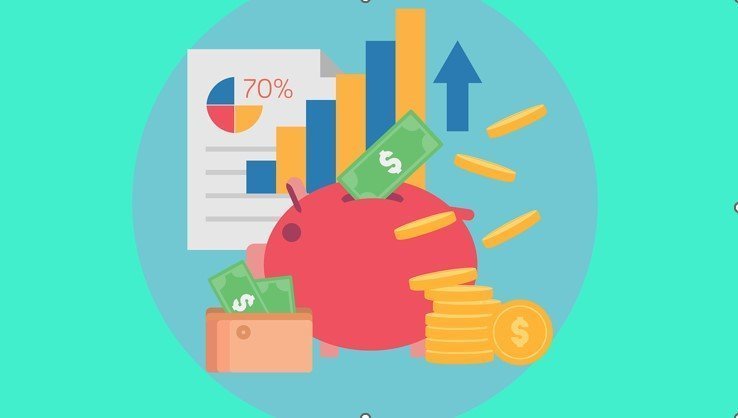Choosing what to invest in is a big deal for folks of any age, but this is even more true as we get older. There is already a lot on our minds, right? So, it’s no wonder that it’s hard to keep up with all the latest advice in terms of what assets we should choose.
It doesn’t help that there are a lot of mixed messages out there, too. One day you’ll read an article telling you to invest in cryptocurrency, the next you’ll see that the market there is kind of crashing. To say it’s confusing is kind of an understatement, honestly, so it never surprises me when I get asked the question, “well, what’s best for seniors to invest in, then?”
Luckily, there are a few options to select from in terms of the “best.” After all, especially in investing, that’s sort of a subjective determination. What works splendidly for one person may be a total flop for another – it’s all going to depend on your personal circumstances and how comfortable you are branching out.
For anyone looking to get some ideas, though, this is the article for you. When I talk about investments for seniors, I’m referring to low-risk, high-reward sorts of assets – so, the more secure, the better. That should give you an idea of what to expect here, right? Shockingly, that does mean that crypto didn’t make the cut. Tragic, I know.
Important Details About Investment

One: Real Estate
Starting off here, let’s do a bit of a deeper dive on one of the most popular types of investments in the past few years. Now, it’s a song and dance that we’ve all seen before – buy properties at a low price and sell them at a higher one once the market is more stable or once you’re able to fix it up a little bit. There’s nothing really new to share there, but I would like to point out some of the most recent developments surrounding this.
As you can read about in this blog post, the super-hot market that we saw back in early 2022 has cooled off a bit. At first glance, that might seem like a bad thing for investors, but I think it’s the opposite of that. You see, now is the perfect time to start buying up properties at a lower price.
From there, what should you do, though? Obviously, I don’t think a lot of people are going to be interested in trying to house flip once they get older. It’s a lot of work, including tons of physical labor (unless you hire contractors, which is a pretty serious extra cost). Instead, you could decide to rent it out.
Landlords make a pretty good profit, even if there are some occupational “hazards” involved like having not-so-great tenants. You’ll have to decide for yourself whether or not you want to deal with that sort of stuff, of course. Just know that right now does seem to be a pretty opportune time to tap into the real estate market.
Two: 60/40 Portfolio
Shifting gears a bit now, we can tackle a bit more of a “traditional” style of investment. For those who are unfamiliar with this, a 60/40 portfolio is one that splits the seed money between stocks and bonds. So, “sixty” percent stocks, while “forty” percent bonds.
Why make this split at all, though? Truthfully, it all comes down to finding the safest and most secure method of generating passive income through our assets. Stocks are profitable if you’re able to pick the right companies to invest in, but they’re not a one-hundred percent guarantee of a return on investment.
In contrast, bonds aren’t quite as profitable, but they are a lot more secure. Since they’re backed by the United States government, they’re inherently just going to have a lot less risk involved. You can cash them in pretty much any time that you want, so having some set aside in a portfolio can give you something nice to fall back on in the case of economic (or financial) disaster.
Naturally, the difficult aspect here is picking what companies you want to buy stock from. For this, I’d say it’s important to watch the news and keep as up-to-date on current events as you possibly can. Even social media can have an impact on how much a company is worth – we’ve seen that demonstrated a lot in the past few weeks thanks to Twitter’s implosion.
Three: Precious Metal

If you know anything at all about safe investments for seniors, you may be surprised that this wasn’t higher up on my list. Really, it’s the quintessential asset for anyone looking to dip their toes into investing without wanting much (if any) risk involved. Those who want a super low-risk sort of are in luck here, since that’s exactly the category that these metals fall under.
As far as how this works, though, it’s pretty simple in practice. There are a few different precious metals that are pretty good as assets. Naturally, gold is the most prominent one, but there is also silver, platinum, and palladium. All can serve this purpose quite well in their own ways.
Most investors go for gold, though, since it’s got such a long-standing history of being valuable and relatively easy to liquidate when necessary. Precious metals are a bit different than the other assets that we’ve discussed so far since they don’t necessarily generate a profit as they sit in storage.
Instead, they’re there to serve as a security of sorts. You may have heard this referred to as a “hedge against inflation” at some point since that’s probably the biggest reason that folks opt to invest in gold in particular. Basically, since they don’t lose value due to inflation in the same way that paper currency does, gold bullion can be used to store wealth when you don’t want it to decrease in worth.
Four: Carbon Capture
So…precious metals are definitely a more “traditional” way to invest, compared to this entry on our list, so I understand if you’d prefer to stick to the tried and true. Carbon capture is relatively new in the scope of things, and you can get some background info on it here: https://money.usnews.com/investing/investing-advice/articles/high-return-low-risk-investments-for-retirees. The big takeaway here, though, is that we can make investments as well as working towards a better future for the next generation.
Often, we don’t really conflate the two. It wasn’t even something that crossed my mind until I started doing a bit more research, and it hit me: why not kill two birds with one stone, right? What is carbon capture, then, and why is it worth sinking our money into?
Admittedly, most experts predict that it will take a few years for this sort of investment to pay off. Because of that, the other things that I’ve mentioned today may be more worthwhile in both the short term and the long term. However, I wanted to bring up carbon capture because of how fascinating it is, and for the potential of “going green” in at least a small portion of our portfolio.
Putting it simply, carbon capture involves both preventing more carbon from entering the atmosphere, as well as removing the stuff that’s already gotten there. Pretty cool, right? I obviously don’t know many more of the specifics seeing as I’m not exactly a chemist, but even the basic explanation had me hooked.
Five: International Options
For our final potential option today, I’d like to briefly touch upon some of the international selections at your disposal. Keep in mind, though, that there is a certain level of risk involved in looking outside of the United States for our assets. It’ll be your call, there, if you want to take that calculated risk or not. The first three I listed are much safer.
However, it’s hard to deny that both in Europe and Asia, there are markets that we can tap into. For Europe, the main draw is banks. I mean, they’re famous for a reason, right? When you think of ones that have a lot to offer in terms of opening savings accounts, this is probably one of the places your mind goes to at least.
Meanwhile, in terms of up-and-coming companies, we can look to Asia to see that there are plenty of opportunities available. So, consider buying stock in some of these newcomers on the scene – there’s always that chance that you’ll strike metaphorical gold and end up hopping on the train before they hit it big. Later on, you can sit back and profit once they blow up!
With all of these assets, there’s a certain level of risk. Naturally, it’s up to each individual investor to decide how much of that they’re willing to take on versus sticking with the safer investing options. There’s no shame in preferring the lower-risk stuff – honestly, for seniors especially, it does seem to be the way to go.
As long as you’re keeping your portfolio diverse, then you’re free to do what you’d like as far as what you put in it. That’s really the key, though – never put all of your financial eggs into one little basket. If things go wrong (which, unfortunately, is bound to happen at some point), then it could really bite you if sink all your cash into one market.
Investing isn’t easy, and I understand that. It’s something that I used to have a really hard time understanding, especially when it came to “getting ahead” of the market. Remember – you don’t always have to do that. Sometimes, it’s better to stick with what we know will work.
Additionals:




























